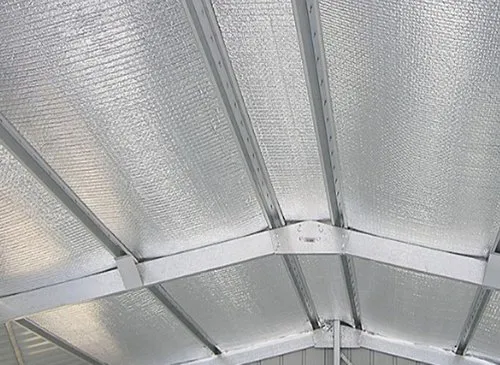
Exploring Different Types of Roof Insulation for Energy Efficiency
June 19th, 2023
Category: All Blogs, General
One of the most important areas to focus on when building an energy-efficient home is
the roof. In order to reduce heat transmission and maintain a pleasant interior
temperature all year round, proper insulation is essential. Roof insulation not only keeps
your house warm in the winter and cool in the summer, but it also reduces your energy
costs and carbon footprint. This blog article will discuss several roof insulation options
that might improve your home’s energy efficiency.
1. Fiberglass Insulation: One of the most popular forms of roof insulation is
fibreglass insulation. It is made of very tiny glass fibres that effectively block the
flow of heat by trapping air pockets. Fibreglass insulation may be put quickly
between roof joists or in attic spaces and is available in batts or rolls. It has a
reputation for being reasonably priced, fireproof, and having superior thermal
performance. But for it to be effective, a correct installation is essential to prevent
gaps or compression.
2. Cellulose Insulation: In most cases, recycled paper materials that have been treated
with fire-retardant chemicals are used to create cellulose insulation. It offers high
thermal performance and is a green choice. When blown or sprayed into attics and
roof cavities, cellulose insulation may efficiently fill gaps and adapt to uneven
areas. It is an effective solution for minimising heat input or loss because of its
capacity to minimise air movement. However, it is crucial to maintain good
moisture management and avoid the material settling over time.
3. Spray Foam Insulation: Insulation made of spray foam is a flexible choice that
may be used on a variety of roof types, including sloping and flat roofs. It is made
up of a combination of chemicals that, when mixed, expand, and solidify into foam.
By forming an airtight seal, spray foam insulation reduces heat transmission and
stops air leakage. It has good energy efficiency, excellent thermal insulation, and
may lessen noise transmission. To guarantee appropriate mixing and application,
however, expert installation is required.
4. Reflective Insulation: Insulation that reflects radiant heat away from the roof
surface is often referred to as a radiant barrier insulation. It comprises of a reflective
substance that is put below the roof or attic, usually aluminium foil. Reflective
insulation works especially well in warmer areas since it lowers the amount of heat
that the roof absorbs, resulting in less money spent on cooling. In colder areas,
where it could prevent heat uptake in the winter, it is less effective. Its total efficacy
can be increased by combining reflective insulation with other types of insulation.
5. Rigid Foam Insulation: The heat resistance and durability of rigid foam insulation,
which is frequently constructed of polystyrene or polyisocyanurate, are excellent.
It comes in stiff panels that are simple to cut to size and adapt to a variety of roof
types. In regions prone to water damage, rigid foam insulation is beneficial due to
its high insulating characteristics and resistance to moisture. Both new building and
retrofitting applications are compatible with it. Although it may need expert
installation, it is more expensive than other insulating choices.
Conclusion: For a house to be comfortable and cost-effective, it is crucial to choose
the correct kind of roof insulation. The ideal decision will rely on a variety of
factors, including the environment, your budget, and the requirements of your
home. Each type of insulation has distinct qualities. Whether you choose rigid foam,
fibreglass, cellulose, spray foam, reflective insulation, or any other material, make
sure the installation is done correctly by talking to experts in the industry. You may
benefit from increased energy efficiency, lower utility costs, and a more sustainable
living environment with the correct insulation.
Leave a Comment
